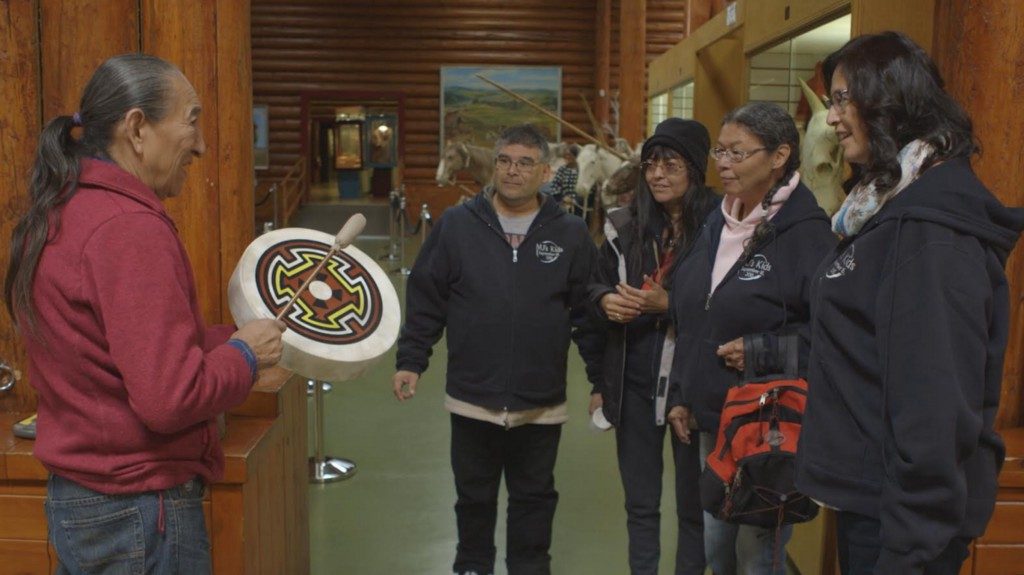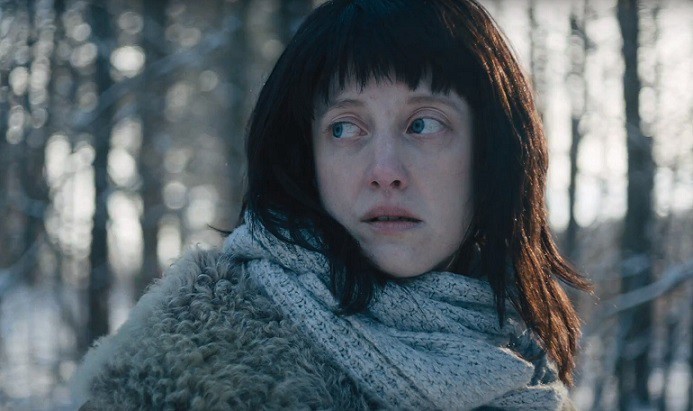Tasha Hubbard is an award-winning filmmaker and an assistant professor at the University of Saskatchewan. Her previous documentary, “Two Worlds Collide,” won a Gemini and a Golden Sheaf Award in 2005. Hubbard’s research and creative projects focus on Indigenous media, the representation of the buffalo, and Indigenous women and children’s experiences.
“Birth of a Family” will premiere at the 2017 Hot Docs Canadian International Documentary Festival on May 2.
W&H: Describe the film for us in your own words.
TH: “Birth of a Family” follows the reunion between four Dene siblings. Like thousands of other Indigenous children, the Canadian and provincial governments took these children away from their birth mother, Mary Jane Adam, during the 1960s. They were then adopted or fostered into white homes.
Betty Ann Adam, the eldest, spent decades looking for her siblings. When she found them all, she arranged for them to spend a week together on a family holiday in Banff. They have some great moments together, but they also are collectively coming to terms with their loss, as well as their mother’s — she was never allowed to be a mother to them.
W&H: What drew you to this story?
TH: The child removal system — also known as the Sixties Scoop — has been in the news media lately; people are starting to hear about this destructive policy, which is a legacy of the residential school system. I felt like this was the chance to film a significant and intimate story of four people directly affected. Betty Ann and the other siblings understood the potential of a project like this, so they were open to me and the crew.
I felt like I was the right person to help tell that story, as my own story is similar: I was adopted as a baby and met my birth family when I was 16.
W&H: What do you want people to think about when they are leaving the theater?
TH: I hope people think about their own sibling relationships — and then think about what it means that the government interfered with these siblings’ right to be a family. I recently spoke with a woman who has been working in child welfare for 40 years. She said the state is a terrible parent.
These kinds of policies continue in Canada, so I hope people who work in that area think about strategies to support families in crisis rather than take children away from their culture and community.
W&H: What was the biggest challenge in making the film?
TH: I wanted the film to be as observational as possible. This meant letting the family take the lead on each day while we remained ready to respond.
The second biggest challenge was filming the interior scenes, as their cabin was cozy for four people. Add two cameras, a sound person, and myself, and it got cramped very quickly. I had to either crouch in the entryway or watch through wireless monitors and then sneak in to give direction.
W&H: How did you get your film funded? Share some insights into how you got the film made.
TH: When Betty Ann came to me with the story, I immediately thought of the National Film Board of Canada. I had worked with them before and knew this story would interest them. It did.
We had very little turnaround, but everyone saw the value of this kind of firsthand access to an intimate situation, so things fell into place about a week before we started shooting.
W&H: What does it mean for you to have your film play at Hot Docs?
TH: It means so much! This has been a goal of mine for awhile. I attended the festival two years ago as part of a National Screen Institute Indigenous film initiative; we had a chance to pitch projects, do some networking, and, of course, watch films and listen to the directors speak about their work. I’m pretty thrilled that I’m one of the directors this year.
W&H: What’s the best and worst advice you’ve received?
TH: The best advice had to do with getting input from others during the editing stage. Documentarian Nettie Wild was one of my story consultants on my first film, and she told me her thoughts and ideas in great detail. Then when she was done, she told me to use whatever resonated with me or felt useful, and to feel free to discard the rest, because I’m the director.
I have repeated that to other filmmakers who have come to me for feedback.
The worst advice happened when I first started as a researcher and director-trainee. On my first project, a producer/videographer told me that the camera microphone was good enough to capture the sound we needed. It wasn’t.
W&H: What advice do you have for other female directors?
TH: I think as women, we are all told at least once — either subtly or directly — that we don’t know what we are doing. Tell whoever says this that they are wrong.
W&H: Name your favorite woman-directed film and why.
TH: My favorite feature film is “Winter’s Bone,” directed by Debra Granik. I loved how she let the land be a character in the film — like when the main character walks across the hills and through the trees. There is so much weight in her walk, and it shows us how much she is carrying. I like films that let things breathe.
My favorite documentary by a female director is “Angry Inuk” by Alethea Arnaquq-Baril. She explores how the seal hunt ban has dramatically and negatively affected Inuit peoples’ way of life, and how most anti-seal hunt activists do not engage directly with the Inuit, and even avoid doing so. It’s a well-told story that took her several years, but she never gave up.
I have a story that has taken me a few years already, so that inspires me to keep going with it.
W&H: There have been significant conversations over the last couple of years about increasing the amount of opportunities for women directors yet the numbers have not increased. Are you optimistic about the possibilities for change? Share any thoughts you might have on this topic.
TH: I think that Indigenous women and women of color directors are also at a disadvantage when it comes to accessing production support for their work.
Am I optimistic that this will change? I hope that the film community will respond faster than general society, and that it will lead change in this area.







